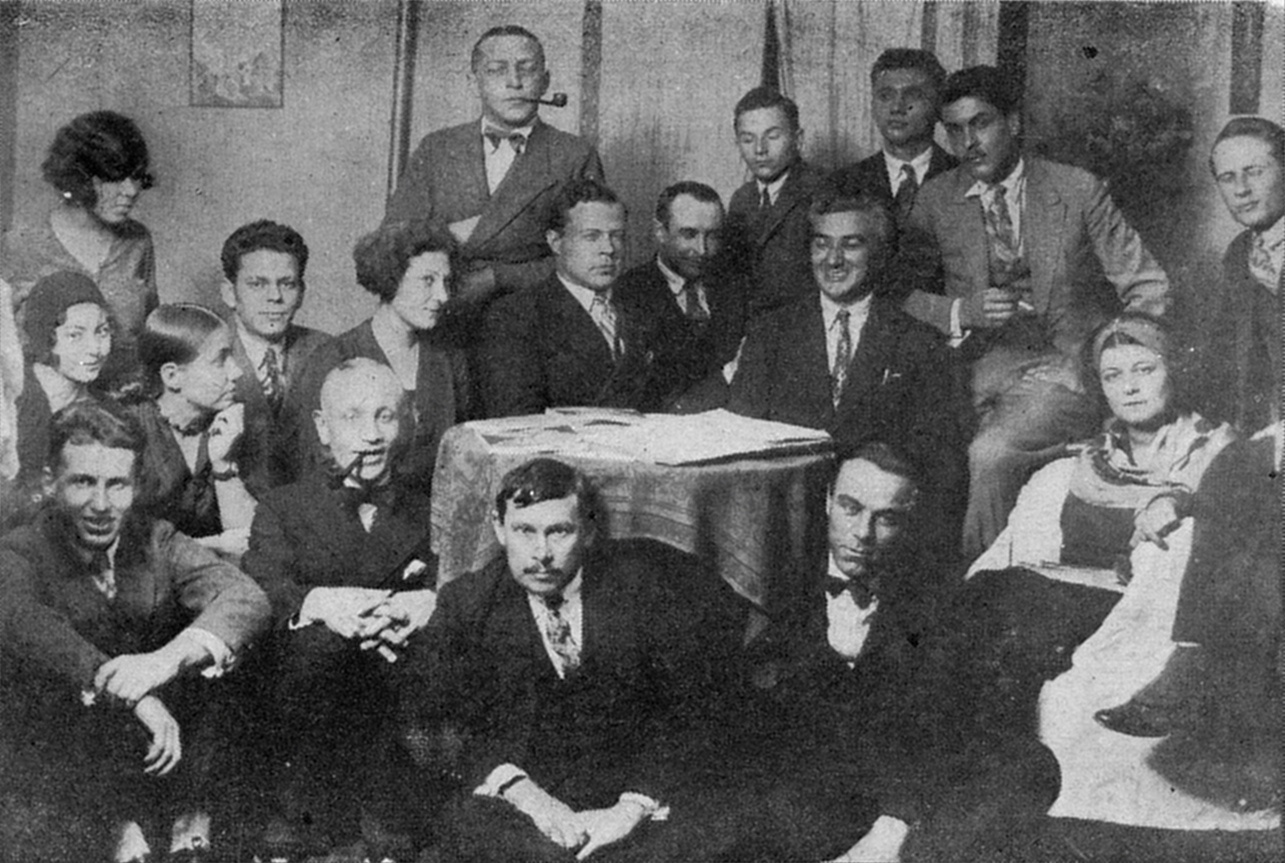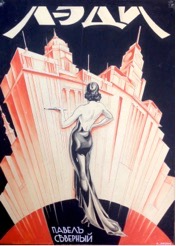Archive
Ponedelnik
- Ponedelnik
Monday; Понедельник
- Association
Ponedelink was the most influential and the longest-running art society in Shanghai. Committed to promoting awareness of Russian culture and to developing its members' taste and erudition, it published the finest art magazine of the diaspora.
Word Count: 36
443 Rue Cardinal Mercier, French Concession (now Maoming Nan Lu, Huangpu Qu); Mikhail Kichigin’s studio, 10 Avenue Dubail, French Concession (now Changle Lu, Huangpu Qu) Shanghai

A meeting of the Ponedelnik society, photography, January 1931 (© Amir Khisamutdinov). Vera Kuznetzova, Mikhail Kichigin and Vasily Zasipkin are sitting around the table. 
Cover of Ponedelnik (Monday)(© Amir Khisamutdinov). 
Severny, Pavel. Lady, Shanghai 1938. Alexander Yaron, cover design, Lady, 1938 (© Mikhail Drozdov). Pavel Severny and Alexander Yaron were collaborators at the Ponedelnik Society in Shanghai. 
A. T. Hull, Jr., HLAM-organised beauty pageant Miss Shanghai in the Arcadia Cabaret at 291 Route Courbet, photography,1940 (© Time Inc.). Alexander Vertinsky is in the centre, Eduard Eliroff (with a ribbon) is on the right. La Renaissance restaurant at 795 Avenue Joffre, photography, Modern Miscellany (Shidai), no. 12, 1932. Shtein, Edward. “Hudozhniki russkogo Kitaia, HLAM I Ponedelnik (Russian Artists in China, HLAM and Ponedelnik).” New Review, no. 213. 1998.
Khisamutdinov, Amir. Russkie hudozhniki v Kitae (Russian Artists in China), Vladivostok, 2015.
Khisamutdinov, Amir. Russkie literaturnye zhurnaly v Kitae (Russian Literary Magazines in China), Vladivostok, 2016.Word Count: 42
- 1929
- 1941
Vera Kuznetzova, Mikhail Kichigin, Vasily Zasipkin, Alexander Yaron, Pavel Severny, Victor Podgoursky, Sofia Moszepan, Lev Grosse, Valentin Prisiajnikoff, Nicholas Sokolovsky
- Shanghai
- Katya Knyazeva. "Ponedelnik." METROMOD Archive, 2021, https://archive.metromod.net/viewer.p/69/2952/object/5145-11320447, last modified: 08-05-2021.
-
Alexander A. YaronDesignerJournalistArtistPhotographerShanghai
An autodidact and a versatile commercial artist, Alexander Yaron applied his talent in portraiture, photography, interior design, advertising, layout and illustration. His best known projects were illustrated art magazines and books produced as part of Adcraft Studios, in tandem with Ivan Kounin.
Word Count: 42
Mikhail KichiginArtistDesignerTeacherShanghaiMikhail Kichigin was Shanghai’s preeminent émigré artist in the 1930s and 1940s. He travelled extensively around China and Eastern Asia, exhibiting his work and conducting visual studies. A versatile professional and a respected art instructor, he influenced a number of young artists from the Russian diaspora.
Word Count: 47
Vasily ZasipkinArtistDesignerShanghaiVasily Zasipkin was a prolific artist and and influential teacher, much loved in the diaspora. Having lost his studio and all his work in wartime Shanghai, he started over in Singapore.
Word Count: 31
HLAM – Society for Artists, Writers, Entertainers and MusiciansAssociationShanghaiAs Shanghai’s largest and most popular Russian émigré association focused loosely on art, HLAM provided a platform for weekly encounters between the self-professed bohemians and a general audience. The HLAM evenings included theatre scenes, comic routines, dance numbers and poetry readings.
Word Count: 42
Vera KuznetzovaArtistDesignerIllustratorShanghaiA native of Harbin and a resident of Shanghai in the 1930s and 1940s, Vera Kuznetzova was among the most accomplished female artists of the Russian diaspora. Together with Mikhail Kichigin, she travelled extensively around China and Eastern Asia, exhibiting her work and conducting visual studies.
Word Count: 46
Victor PodgourskyArtistDesignerTeacherShanghaiVictor Podgoursky spent more than twenty-five years in Shanghai, working as an artist, teacher and designer. As a long-standing member of the Shanghai Art Club, he acted as the resident art critic and an instructor in life drawing and painting for the members.
Word Count: 43